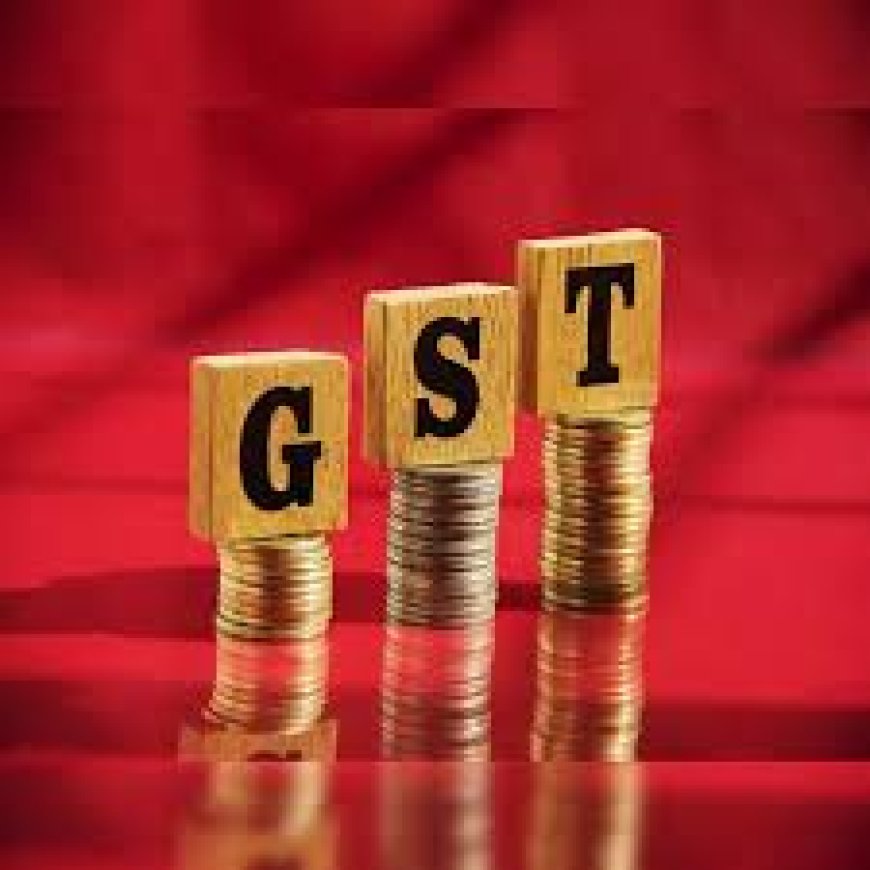GST collections rise 6.1% YoY to Rs 1.85 lakh crore in June
India’s GST revenue for June 2025 stood at ₹1.85 lakh crore, registering 6.1% YoY growth. Analysts credit digital compliance and economic revival for the steady rise.

GST Revenues Maintain Upward Momentum Amidst Economic Rebound
India’s Goods and Services Tax (GST) collections in June 2025 surged to ₹1.85 lakh crore, marking a 6.1% year-on-year growth, according to data released by the Ministry of Finance on Tuesday. This steady rise in indirect tax revenues reflects a strengthening consumption trend and improving compliance across sectors.
The June figures, while slightly lower than the record ₹1.92 lakh crore collected in April 2025, continue a consistent upward trajectory that has defined the current fiscal year. The collections in June 2024 stood at ₹1.74 lakh crore.
Composition of June 2025 GST Revenue
The gross GST revenue collected in June 2025 includes:
-
Central GST (CGST): ₹32,167 crore
-
State GST (SGST): ₹40,211 crore
-
Integrated GST (IGST): ₹99,252 crore (including ₹45,615 crore collected on import of goods)
-
Cess: ₹13,812 crore (including ₹1,436 crore collected on import of goods)
Post-settlement of IGST, the Centre received ₹39,586 crore and the states received ₹41,735 crore as their respective shares, ensuring timely disbursement of funds.
Government Commentary and Sectoral Impact
Commenting on the figures, a senior Finance Ministry official noted:
“The steady growth in GST collections underscores the positive momentum in domestic economic activity and reflects enhanced taxpayer compliance. The ongoing measures to improve invoice matching and e-invoicing have yielded visible results.”
Key contributing sectors to the revenue rise include manufacturing, e-commerce, financial services, and auto components. The services segment, particularly travel and hospitality, also registered a strong uptick in tax payments, boosted by summer travel demand.
Analyst Take: Compliance and Digital Systems Key
Tax experts attribute the consistent growth to a combination of macroeconomic revival and improved tax administration.
Ritika Shah, Indirect Tax Partner at EY India, observed:
“The trend shows increased transparency due to GSTN’s digital backend, along with better detection of evasion. Businesses are now aligning more rigorously with e-invoicing norms, especially those in the ₹5 crore-plus bracket.”
Saurabh Jain, Chief Economist at MK Global, added:
“A 6% year-on-year growth is healthy, though not spectacular. The real driver now is enforcement of audit trails and data triangulation. Compliance initiatives are as important as consumption recovery in sustaining GST growth.”
Comparison with Recent Months
| Month | GST Collection (₹ Crore) | YoY Growth |
|---|---|---|
| April 2025 | 1,92,247 | 12.5% |
| May 2025 | 1,83,289 | 9.2% |
| June 2025 | 1,85,000 | 6.1% |
Although the June figure is marginally above May’s, analysts note that June typically sees softer activity due to seasonal factors and lower festival-driven consumption. Still, surpassing ₹1.80 lakh crore consistently for three consecutive months is a sign of fiscal stability.
Market Context and Broader Economic Signals
The rise in GST collections aligns with recent data on core sector growth, PMI expansion, and rising non-oil imports. Retail sales data from private research firms also suggest moderate but stable consumer sentiment.
Market participants view the tax figures as reinforcing optimism about India's macroeconomic resilience. On the BSE, the Nifty FMCG and Auto indices both closed in green on Tuesday, following the GST announcement.
Fiscal Implications for Government
Rising GST revenues are a welcome signal for the Centre as it aims to meet fiscal deficit targets while sustaining capital expenditure in infrastructure and green energy.
With robust tax inflows, the government is expected to have more leeway in funding public sector projects without compromising on deficit control.
A senior official from the Controller General of Accounts noted:
“We are closely monitoring GST and direct tax flows. The Q1 revenue performance gives us room to balance welfare and infrastructure spending without resorting to aggressive borrowing.”
Investor Outlook: Stability and Growth Support
Investors and equity market strategists are reading the consistent GST performance as a medium-term support factor for sectors tied to domestic demand.
Anil Choudhary, Fund Manager at Mahindra Mutual Fund, said:
“The trend in indirect tax revenue reassures us about real activity on the ground. It supports our positive bias on sectors like autos, consumer durables, and logistics.”
Bond markets are also likely to react positively, with GST buoyancy seen as reducing pressure on fiscal slippage.
Outlook: Second Half Hinges on Festive Consumption
Looking ahead, GST collections are expected to rise further in the second half of FY26, especially during the festive period starting September. However, any slowdown in global trade or domestic inflation pressures could temper the pace.
The GST Council is also expected to meet later this month, where discussions around rate rationalization and compliance enforcement are likely. The Finance Ministry remains focused on broadening the tax base and addressing sectoral concerns around input tax credits.
India’s GST collections crossing ₹1.85 lakh crore in June 2025 not only highlight the economic momentum but also reflect the success of policy reforms and digital compliance mechanisms. With continued macroeconomic stability and robust domestic consumption, GST revenue may continue to serve as a bellwether for fiscal and economic health.
What's Your Reaction?
 Like
0
Like
0
 Dislike
0
Dislike
0
 Love
0
Love
0
 Funny
0
Funny
0
 Angry
0
Angry
0
 Sad
0
Sad
0
 Wow
0
Wow
0












































































